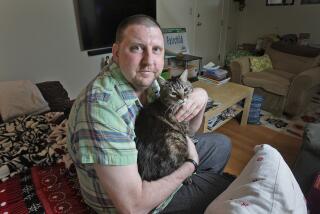Life and Death
- Share via
In this age of rapidly developing medical techology, no one can escape being involved, directly or indirectly, in agonizing decisions of life and death affecting loved ones. There is a new and welcome contribution to the understanding of how best to make those dreaded decisions.
Broader, clearer guidelines on the withdrawal of life-sustaining medical treatment have been agreed on by the Los Angeles County Medical and Bar associations in another constructive contribution to handling right-to-die decisions.
The new guidelines go beyond the 1981 guidelines, which were limited to defining the circumstances under which cardiopulmonary life-support systems might be discontinued. The new guidelines extend to “all life-sustaining interventions, including nutrition and hydration.” All of these, including food and water, are “legally equivalent,” the guidelines affirm. That is a crucial elaboration.
The clarity and rigor of the guidelines will be helpful to health-care professionals, to patients and to those required to make decisions on behalf of patients no longer competent to decide for themselves. But the guidelines make clear that there is nothing easy in these life and death decisions.
Perhaps the most important caution in the report draws on the words of the California Court of Appeal in Barber vs. Superior Court--the celebrated 1983 case in which murder charges against two physicians were dismissed, as they surely should have been. The doctors had discontinued intravenous fluids for a comatose patient unlikely to recover brain function. “No precise guidelines as to when or how these decisions should be made can be provided by this court, since this determination is essentially a medical one to be made at a time and on the basis of facts which will be unique to each case,” the court had found.
The new guidelines rely heavily on that and a second decision of the same state appeal court last year in the case of Bartling vs. Superior Court, in which the court upheld a patient’s right to order doctors to disconnect him from a respirator. That decision reaffirmed a critical element in the 1981 guidelines of the county Bar and medical associations making paramount the right of a person “capable of giving informed consent” to decide the form of his or her medical care “even when such a decision might foreseeably result in shortening the individual’s life.”
That right of the competent adult to limit life-sustaining therapy has been extended to the incompetent patient through a variety of means. The new guidelines include references to all of these. In the absence of any alternative, decisions can be made by court-appointed conservators. More common are joint decisions that families and physicians can make in behalf of the incompetent patient. And the patient has two options in California to anticipate the problem while still competent to make an informed decision. There are the living wills authorized in 1976 by the California Natural Death Act, although these, because of their rigidity and their narrow applicability to irreversible terminal illnesses, have proved to be of limited usefulness. And there is the new and more promising instrument, fully activated only last year, of a durable power of attorney for health care, through which a person designates a trusted family member or friend to make, with the physician, crucial decisions in the event that the patient cannot participate. The California Medical Assn. has produced convenient forms for persons wanting to empower a surrogate under this plan.
Most controversial of the recommendations probably is the affirmation that all life-sustaining interventions, including food and water, “are legally equivalent.” The drafting committee acknowledged “that nutrition and hydration have a powerful symbolic significance to both members of the general public and to many care-givers.” Thus the withholding of food and water in appropriate circumstances can be a more difficult decision than the withdrawal of “heroic” measures, yet the food and water can unreasonably prolong the process of dying as surely as elaborate support systems.
The 1981 guidelines of the Joint Committee on Biomedical Ethics of the Los Angeles County Medical and Bar associations were subsequently adopted by the California and American Medical associations and have won international commendation. The new guidelines, drawn by the same committee and now adopted by the Los Angeles County Bar and Medical associations, are a useful further contribution to the effort to discern the difference between the prolongation of life and the prolongation of death.






